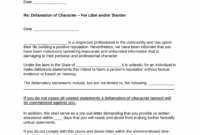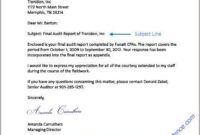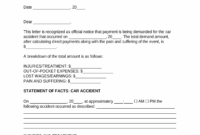Expressing gratitude is one of the most powerful and often overlooked skills you can develop, not just as a student, but throughout your entire life. It’s a simple act that carries immense weight, showing respect, appreciation, and a level of thoughtfulness that truly sets you apart. Whether it’s for a teacher who went the extra mile, a mentor who offered valuable guidance, or a scholarship committee that invested in your future, a sincere thank you can make a lasting positive impression.
As a student, you’ll encounter numerous situations where a well-crafted thank you note can make a significant difference. It’s not just about politeness; it’s about building relationships, demonstrating professionalism, and acknowledging the effort others have made on your behalf. This article aims to equip you with a reliable thank you letter template for students, along with practical advice to help you articulate your appreciation effectively and genuinely, ensuring your message resonates with the recipient.
The Power of Gratitude: Why Students Should Write Thank You Letters
Sending a thank you letter might seem like a small gesture, but its impact is far-reaching. Imagine receiving a heartfelt note of appreciation; it brightens your day, affirms your efforts, and makes you feel valued. As a student, extending this courtesy reflects incredibly well on you. It shows maturity, respect, and a keen awareness of the support systems that contribute to your academic and personal growth. This simple act can solidify relationships with educators, mentors, and even future employers, leaving a memorable impression long after the initial interaction.
Beyond the immediate positive impression, expressing gratitude through a written letter also contributes to your personal and professional development. It encourages reflection on the help you’ve received, fostering a sense of humility and interconnectedness. This practice hones your communication skills, particularly your ability to articulate thoughts and feelings clearly and concisely, which is a valuable asset in any field. Learning to properly convey thanks is a stepping stone to building stronger networks and a more positive reputation.
Think about it from the recipient’s perspective. A teacher often dedicates countless hours to their students, a mentor volunteers their time and expertise, and a scholarship committee painstakingly reviews applications to support worthy individuals. When you take the time to acknowledge their efforts, you validate their commitment and reinforce the value of their contributions. This can encourage them to continue their work with renewed enthusiasm and might even prompt them to consider you for future opportunities or recommendations.
Ultimately, a thank you letter isn’t just a formality; it’s a strategic tool for relationship building and a testament to your character. It’s an investment in your future, showcasing your professionalism and considerate nature. Cultivating a habit of expressing gratitude regularly will serve you well in all aspects of life, fostering goodwill and opening doors you might not have known existed.
Key Occasions for Students to Send a Thank You Letter
- After a job interview or internship.
- Following a scholarship award or financial aid.
- When receiving a letter of recommendation.
- After a mentor’s guidance or advice.
- To a teacher for exceptional help or support.
- For a guest speaker or special presentation.
- Upon receiving a gift or kind gesture.
Crafting Your Perfect Thank You Letter: A Step-by-Step Guide
Writing a thank you letter doesn’t have to be daunting. The key is sincerity and specificity. While a template provides a helpful framework, the most impactful letters are those that come from the heart and include details unique to your situation. Start by recalling exactly what you’re thankful for. Was it a specific piece of advice, a particular lesson, or the opportunity itself? Pinpointing these details will make your letter authentic and personal, avoiding generic phrases that can sound insincere.
Your letter should be concise, professional, and easy to read. Aim for clarity and a positive tone throughout. Remember, the goal is to express appreciation without sounding demanding or overly effusive. A well-structured letter typically includes a clear greeting, a direct statement of thanks, a body where you elaborate on your gratitude with specific examples, and a polite closing. Keep it brief, typically one to two paragraphs, unless the situation truly warrants more detail.
Personalization is paramount. While a thank you letter template for students offers a starting point, resist the urge to simply copy and paste. Instead, use it as a guide to tailor your message. Refer to specific conversations, events, or outcomes that resulted from the recipient’s help. For example, instead of "Thank you for the interview," try "Thank you for the insightful conversation about the marketing internship position last Tuesday. I especially appreciated learning about the team’s project on sustainable advertising." This shows you were attentive and truly valued the interaction.
Before sending, always proofread your letter carefully. Grammatical errors or typos can undermine your professionalism and detract from your message. Read it aloud to catch awkward phrasing. Consider whether an email or a handwritten note is more appropriate for the context; for formal occasions like scholarship committees or job interviews, email is often preferred for speed, but a handwritten note can add a personal touch for mentors or teachers you know well.
Here’s a simple structure you can adapt to create your personalized thank you letter:
- **Salutation:** Start with a formal greeting (e.g., “Dear [Name]”).
- **Opening:** Immediately state your purpose – express your gratitude clearly and concisely.
- **Body Paragraph(s):** Elaborate on your thanks by mentioning specific details. How did their help or opportunity benefit you? What did you learn or gain?
- **Closing:** Reiterate your thanks, perhaps mention a future hope or next step, and express your continued appreciation.
- **Sign-off:** Use a professional closing (e.g., “Sincerely,” “Best regards,” “Respectfully”).
- **Your Name:** Type or write your full name.
Embracing the practice of writing thank you letters is more than just good manners; it’s a powerful way to cultivate a positive reputation and foster strong relationships throughout your academic journey and beyond. Each note you send not only acknowledges someone else’s generosity or effort but also reinforces your own commitment to thoughtfulness and professionalism. This habit can genuinely set you apart, demonstrating a level of consideration that is increasingly valued in all walks of life.
By consistently expressing your appreciation, you contribute to a culture of gratitude, encouraging others and strengthening the bonds within your community. It’s a simple yet profoundly effective way to leave a positive footprint, ensuring that your interactions are remembered not just for what transpired, but for the genuine respect and appreciation you extended. Start making gratitude a cornerstone of your communication, and watch how it enriches your experiences.



